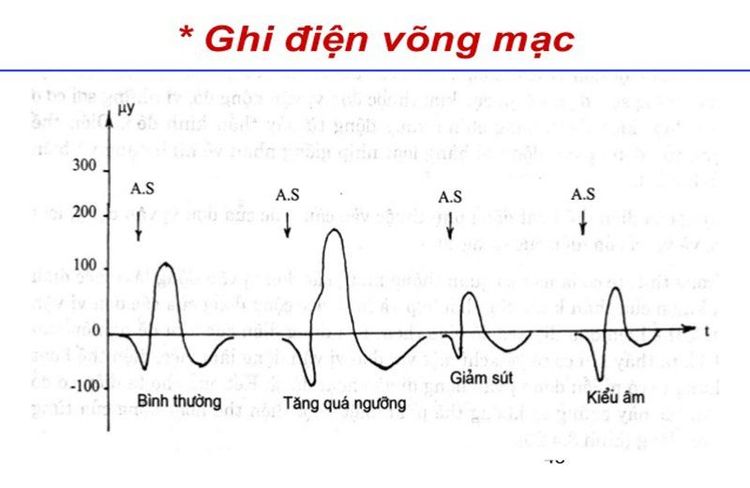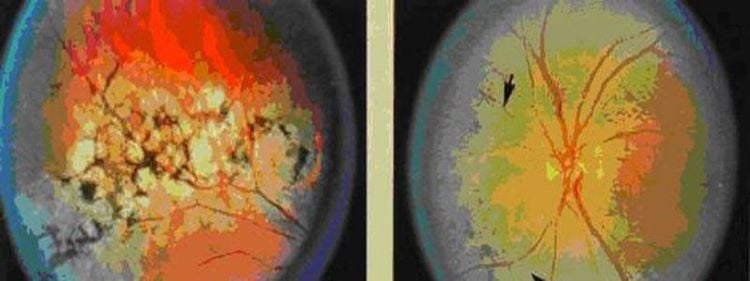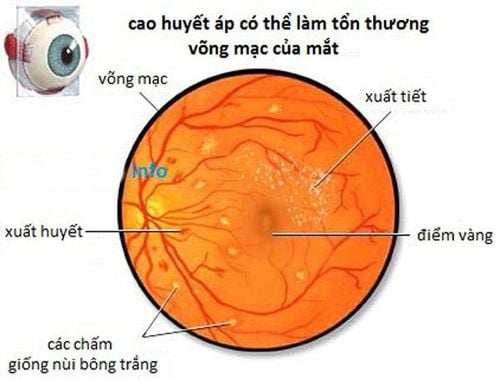This is an automatically translated article.
The article is professionally consulted by Specialist Doctor II Nguyen Thai Hung - Department of Medical Examination & Internal Medicine - Vinmec Danang International General Hospital.
In fact, choroidal degeneration is not really a disease, but rather a group of hereditary diseases characterized by poor vision in low light conditions.
1. What is choroidal degeneration?
To delve into the issue “What is chorioretinal degeneration? ” then we need to learn about the concept of retina. Accordingly, the retina is the extremely thin nerve membrane at the back of the eye, which plays the role of sensing light and converting them into nerve signals that are transmitted to the brain for analysis.Retinal degeneration can affect everyone, regardless of age. However, it is still more common in people with refractive errors, the most common being nearsightedness. The higher the degree of myopia, the higher the risk of retinal degeneration.
Retinal pigment degeneration is also known as chorioretinal degeneration. The inheritance of the disease can be in dominant, recessive, and sex-related recessive inheritance patterns. According to research, the prevalence of this disease in the US population is 1 in 4,000. Among them, 20% are dominant inheritance, nearly 10% are sex-linked recessive inheritance, the rest are recessive and single cases of dominant inheritance are caused by newly occurring mutations. The disease is more common in men than in women.

Thoái hóa sắc tố võng mạc phần lớn do di truyền
The patient has night blindness (poor vision when it starts to get dark)... When the rod cells are degenerated, the patient's field of vision will be gradually narrowed in a tubular shape, eventually only looking through binoculars (tubular market).
Followed by degeneration in the cones. Cone cells are concentrated in the macula, responsible for central vision and color perception. As a result, central vision in many patients is significantly prolonged - but from over 40 years of age there is often a dramatic decline. In addition, the patient has additional manifestations of chromosomal disorder of the green - yellow axis.
2. Symptoms and diagnostic methods
The earliest symptom that patients with chorioretinal degeneration recognize is poor vision in low-light environments. For example, in a dark house without the lights on, in a theater, patients easily trip over furniture while walking. Even the patient's vision in full light conditions can sometimes decrease.When examining outside, often the doctor does not detect any abnormality.
Fundus examination is characterized by dark pigments clustered in clusters shaped like bone cells lying along or surrounding blood vessels. Pigmentation is initially present only in the equatorial region, then diffuses peripherally and centrally until nearly the entire retina.

Thoái hóa hắc võng mạc không có biểu hiện bất thường
There are also times when the doctor will not see the presence of osteocyte-shaped pigment clusters in the retina. Visual field testing is the first function test to do when a patient has poor vision in a poorly lit environment.
Electroretinogram is the most important test for evaluating hereditary retinal degenerative diseases. The results of the electroretinogram showed the type of retinal cells damaged, the severity of the disease, the genetics, and the sex-relatedness of the disease.
Electroretinogram can be done as early as when the patient is a child to diagnose the disease. This test is fairly easy to perform, with no need for general anesthesia.

Điện võng mạc có thể tiến hành cả cho trẻ nhỏ
3. Some uncommon forms of retinitis pigmentosa
Some uncommon forms of retinitis pigmentosa are as follows:Very little or no pigment degeneration: the patient still has symptoms of the disease, but the pigment disorder is more than 30 years old. Retinitis pigmentosa in only one eye: Sufficient signs of retinitis pigmentosa are present in one eye while the other is nearly normal, with mild chromatic and electrical damage to the retina may be seen. Retinitis pigmentosa accompanied by other ocular anomalies: eg corneal cones, congenital cataracts. Reversible retinitis pigmentosa: cones are damaged before rods. The patient had loss of central vision and early color perception impairment preceded by both visual field narrowing and night blindness. Retinitis pigmentosa is one of the following diseases and systemic syndromes combined such as: Leber blindness, Laurence Moon disease, Usche disease.

Có nhiều hình thái của viêm võng mạc sắc tố
4. Monitoring - Treatment
Newly diagnosed patients with chorioretinal degeneration need to be explained to help them understand the disease, its genetics, and how to cope with the impact of reduced visual function. These include decreased visual acuity, narrowing of the field of vision, and the ability to see in dark environments.Young patients with visual impairment are advised not to drive themselves for the safety of themselves and other road users. People with advanced disease are advised to attend classes in adaptation and mobility training.
Persons officially classified as blind will be recognized by the authorities for necessary policy support.
Counseling on the genetics of the disease is very helpful for patients and their families in life planning and marriage. Siblings and children of people with degenerative chorioretinopathy should also be called in for the examination and tests necessary to confirm the presence of the disease.
The treatment of chorioretinal degeneration is currently facing many difficulties because it is a serious disease, congenital and inherited. Medical intervention is also only symptomatic treatment, hoping to slow down the progression of the disease.
People with chorioretinal degeneration can be given vitamin A palmitate at a dose of 15,000 units/day orally. However, in pregnant women, the use of high doses of vitamin A is contraindicated due to the potential for genetic mutations. Prolonged intake of vitamin A can also accumulate in the body, causing liver toxicity.

Sử dụng vitamin A liều cao khi mang thai có thể gây đột biến gen
Recently, stem cell studies have also shown the direction of using healthy stem cells transplanted into the retina with the hope that these healthy cells will grow in the fundus of the eye, partially changing the histological structure and improving the quality of life. Improve retinal function in patients.
In addition, patients treated for retinal degeneration need to go to the doctor periodically and as soon as there are abnormal eye signs to detect possible accompanying diseases such as: refractive error, cataract, glaucoma. , retinal detachment ... Periodic examination and examination when there are abnormalities will help timely treatment, preserving optimal vision.
Vinmec International General Hospital is one of the hospitals that not only ensures professional quality with a team of leading medical doctors, modern equipment and technology, but also stands out for its examination and consultation services. comprehensive and professional medical consultation and treatment; civilized, polite, safe and sterile medical examination and treatment space.
Specialist II Nguyen Thai Hung has 13 years of experience as an eye doctor at C Hospital Da Nang and Ngu Hanh Son General Hospital - Da Nang. Currently working as an Ophthalmologist at the Inter-specialty Clinic of Medical Examination - Internal Medicine, Vinmec International General Hospital Da Nang.
Customers can directly go to Vinmec Health System nationwide to visit or contact the hotline HERE for support.














